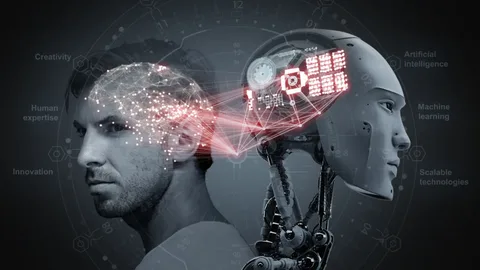The rise of machines—robots, AI agents, and intelligent systems—is reshaping traditional paradigms of labor and productivity. As automation and artificial intelligence become increasingly sophisticated, organizations are reaping the benefits of enhanced efficiency, accuracy, and scalability.
However, this ongoing technological revolution also poses significant challenges for the human workforce, leaving many individuals vulnerable to job displacement and economic insecurity. In this context, the insights of thought leaders like Dr. James O. Rodgers, renowned for his expertise in diversity management, are invaluable in directing the complex interplay between humans and machines.
With over 35 years of experience as a diversity management strategist and trusted advisor to numerous global enterprises, Dr. Rodgers brings a unique perspective to the discussion. As “The Diversity Coach,” he has spearheaded efforts to integrate diversity and inclusion initiatives into organizational strategies, recognizing the transformative potential of fostering inclusive environments where all individuals can thrive.
Now, as the culture of work undergoes unprecedented transformation spearheaded by modern tech, Dr. Rodgers emphasizes the importance of reimagining traditional notions of diversity to encompass the dynamic relationship between humans and machines.
The advent of automation and AI has ushered in a new era of productivity and innovation, enabling organizations to streamline processes, reduce costs, and enhance competitiveness. From manufacturing plants to corporate boardrooms, machines are increasingly assuming tasks that were once the exclusive domain of human workers, performing with unparalleled precision and consistency.
However, this shift towards automation has also sparked concerns about the future of employment, as many fear that widespread adoption of machines will lead to mass unemployment and exacerbate socioeconomic inequalities.
Despite these challenges, Dr. Rodgers remains optimistic about the potential for humans and machines to coexist and thrive in the workplace. Rather than viewing automation as a threat to human labor, he advocates for a more nuanced approach that recognizes the complementary nature of human and machine capabilities.
In Dr. Rodgers’ view, the key to steering this ongoing shift lies in fostering collaboration and synergy between humans and machines, harnessing the unique strengths of each to drive innovation and create value.
One of the most compelling arguments for human-machine collaboration is the potential to augment human capabilities and enhance overall productivity. While machines excel at executing repetitive tasks with speed and precision, humans possess cognitive abilities such as creativity, empathy, and complex problem-solving skills that are difficult to replicate artificially. By leveraging the strengths of both entities, organizations can achieve greater efficiency and effectiveness, unleashing a new wave of innovation and growth.
Human-machine collaboration presents opportunities for up skilling and reskilling the workforce, empowering individuals to adapt to the changing demands of the digital economy. As machines assume routine tasks, humans can focus on higher-order activities that require critical thinking, emotional intelligence, and interpersonal communication—skills that are essential for driving value in an increasingly complex and interconnected world.
Dr. Rodgers emphasizes the importance of investing in lifelong learning and professional development initiatives that enable individuals to thrive in an era of technological disruption. In addition to enhancing productivity and fostering skill development, human-machine collaboration can also lead to more inclusive and equitable workplaces.
By using AI-driven algorithms and data analytics, organizations can mitigate the risk of bias in decision-making processes, promoting fairness and transparency in hiring, promotion, and performance evaluation practices. By embracing diversity in all its forms—including the diversity of thought and perspective that arises from human-machine collaboration—organizations can create environments where all individuals feel valued, respected, and empowered to contribute their fullest potential.
However, achieving successful human-machine collaboration requires proactive leadership and a commitment to fostering a culture of innovation and adaptability. Dr. Rodgers emphasizes the importance of creating a supportive ecosystem where individuals feel empowered to experiment, take risks, and learn from failure.
He underscores the need for transparency and open communication around the ethical implications of AI and automation, ensuring that decisions are made with careful consideration of their impact on employees, customers, and society at large.
The rise of machines presents both opportunities and challenges for the future of work. By embracing the potential for human-machine collaboration, organizations can unlock new possibilities for innovation, productivity, and inclusivity. Thought leaders like Dr. James O. Rodgers play a crucial role in guiding organizations through this transformative journey, offering insights and strategies for navigating the complex interplay between humans and machines.
As we chart a course towards a future where humans and machines work together harmoniously, it is imperative that we remain committed to fostering environments where all individuals can thrive and contribute to the collective success of organizations and society as a whole.
